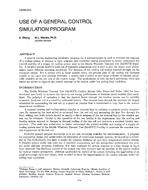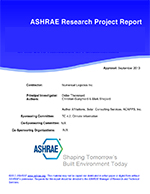The basic concept of a method that will provide zone-level outdoor ventilation air control in variable-air-volume (VAV) systems at the minimum energy consumption rate in real-time optimisation techniques is presented. As expected, the optimal control for the instantaneous examples presented reduces the energy consumption rate when compared to an unoptimised zone-level control scheme. The ongoing research is aimed at quantifying the annual energy-saving potential in various U.S. geographic regions and will be presented at a later time. The optimisation utilises the multiple-space method of ANSI/ASHRAE Standard 62-1989 to control the supply air flow rate to the critical space(s), thus reducing their ratio of required outdoor ventilation air to supply air and allowing the room temperature controls to maintain the space temperature through reheat. The result is a significant reduction in the quantity of outdoor ventilation air that must be conditioned while at the same time maintaining zone-level ventilation control.
KEYWORDS: optimisation, variable volume air conditioning, controls, energy consumption, ventilation, zones, air change rate, outdoor air, supply air, room temperature, air conditioning, air quality, indoor, USA
Citation: ASHRAE Trans. 1994, Vol.100, Part 1, Paper number 3753, 168-179, 17 figs., refs.
Product Details
- Published:
- 1994
- File Size:
- 1 file , 1.4 MB
- Product Code(s):
- D-17608


